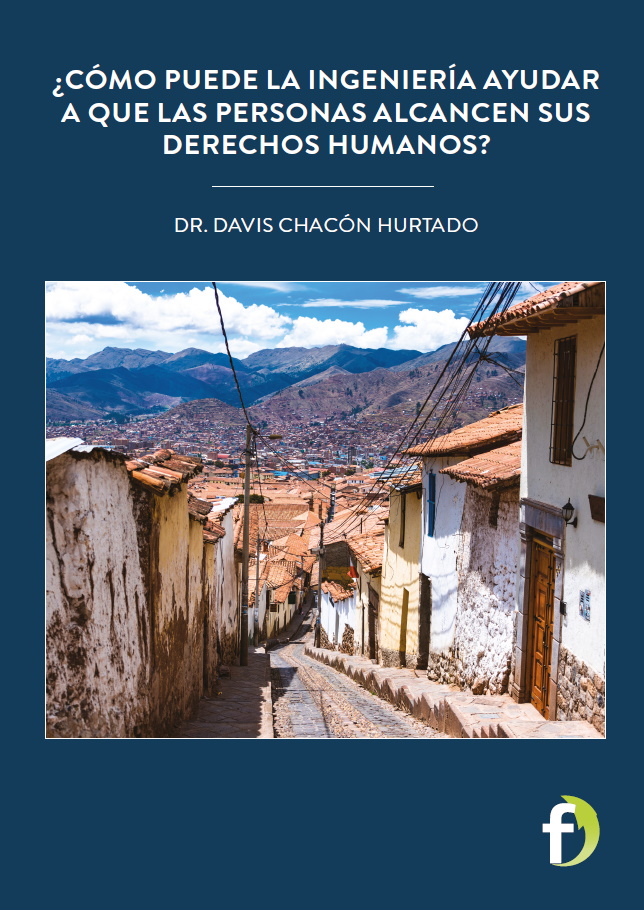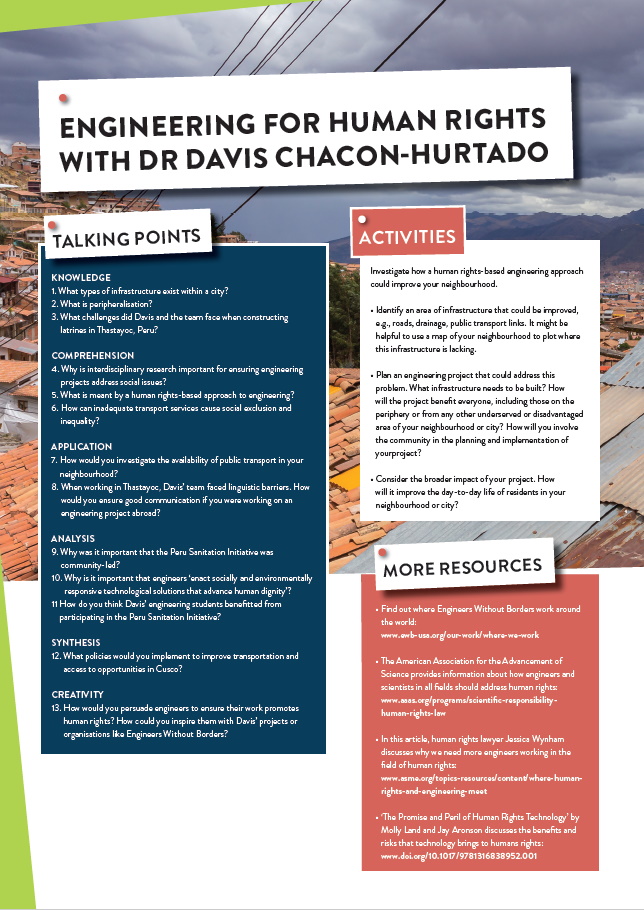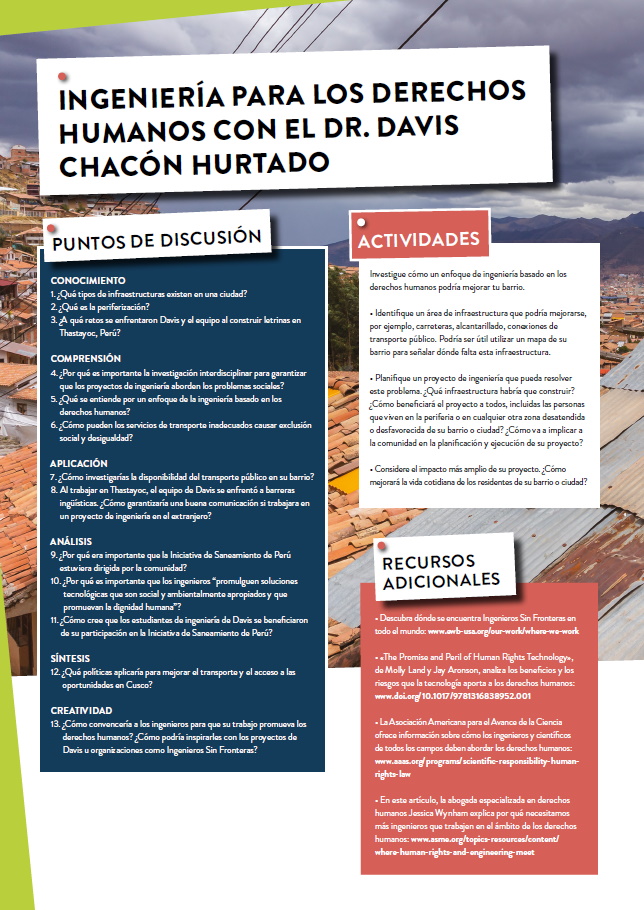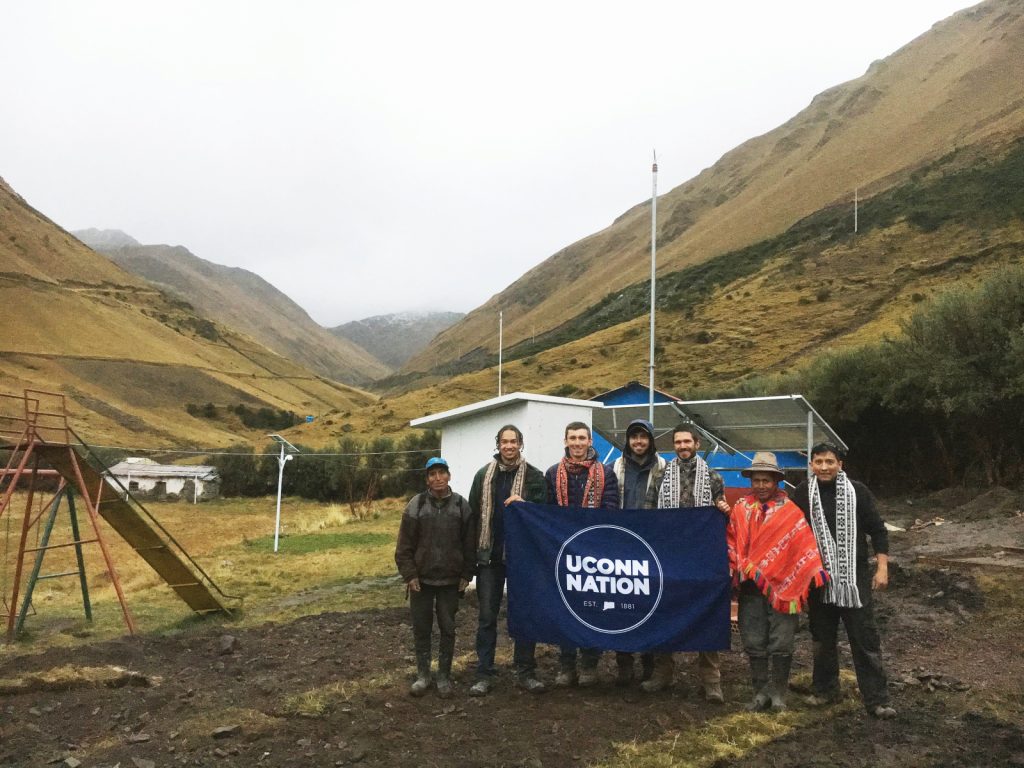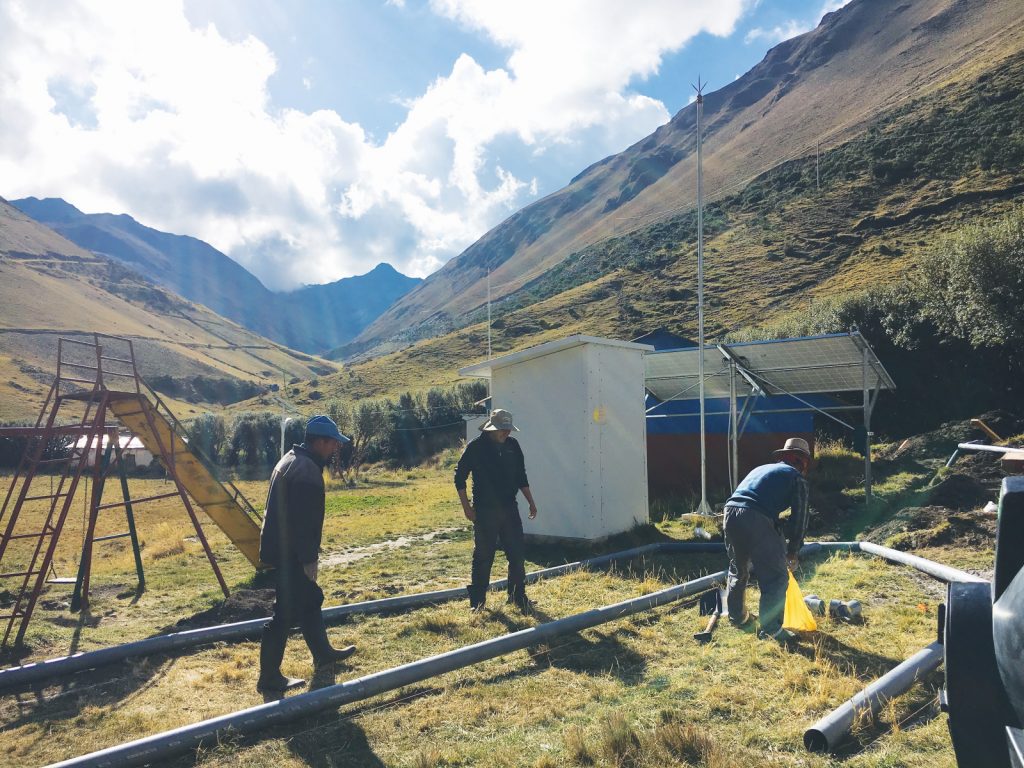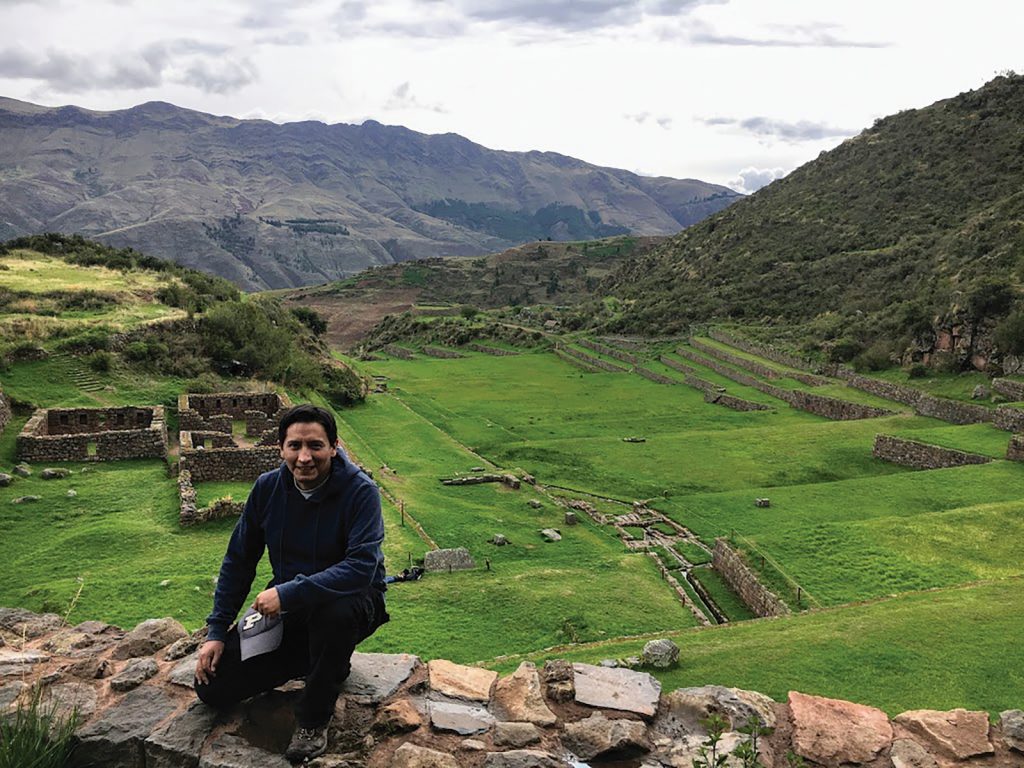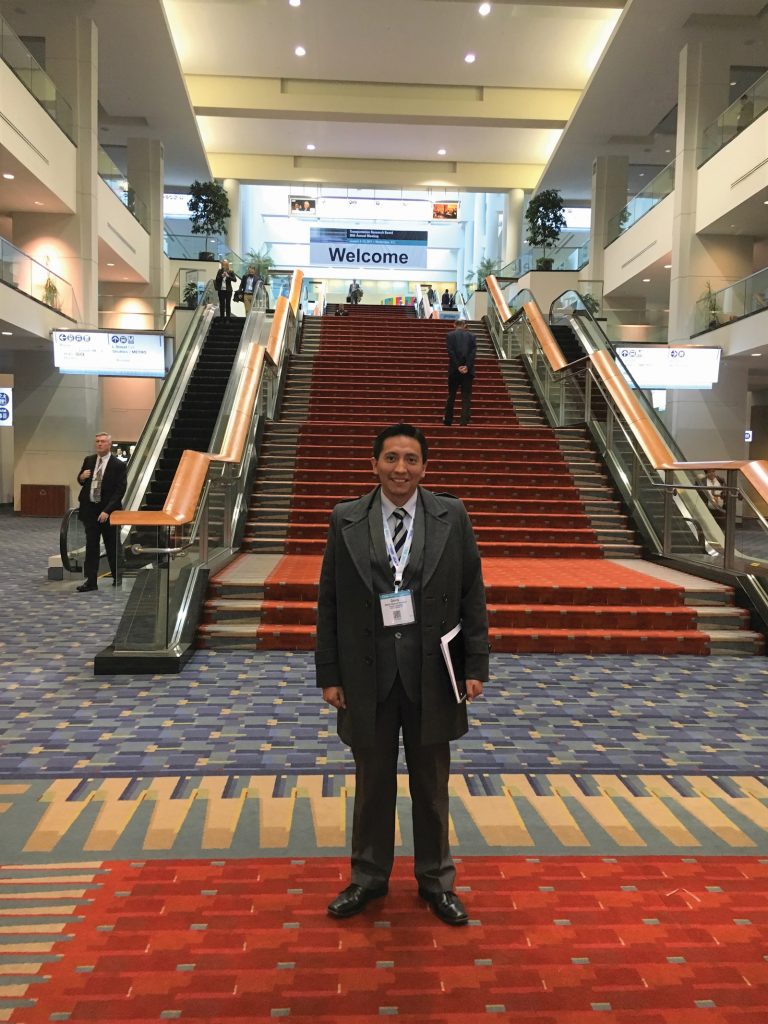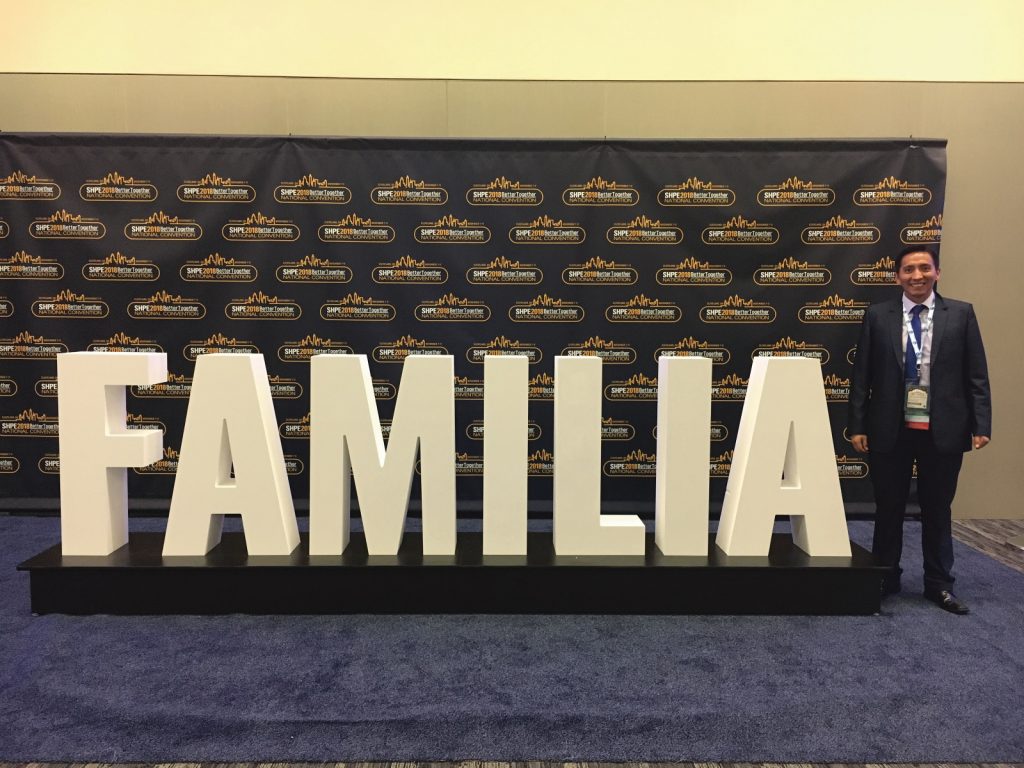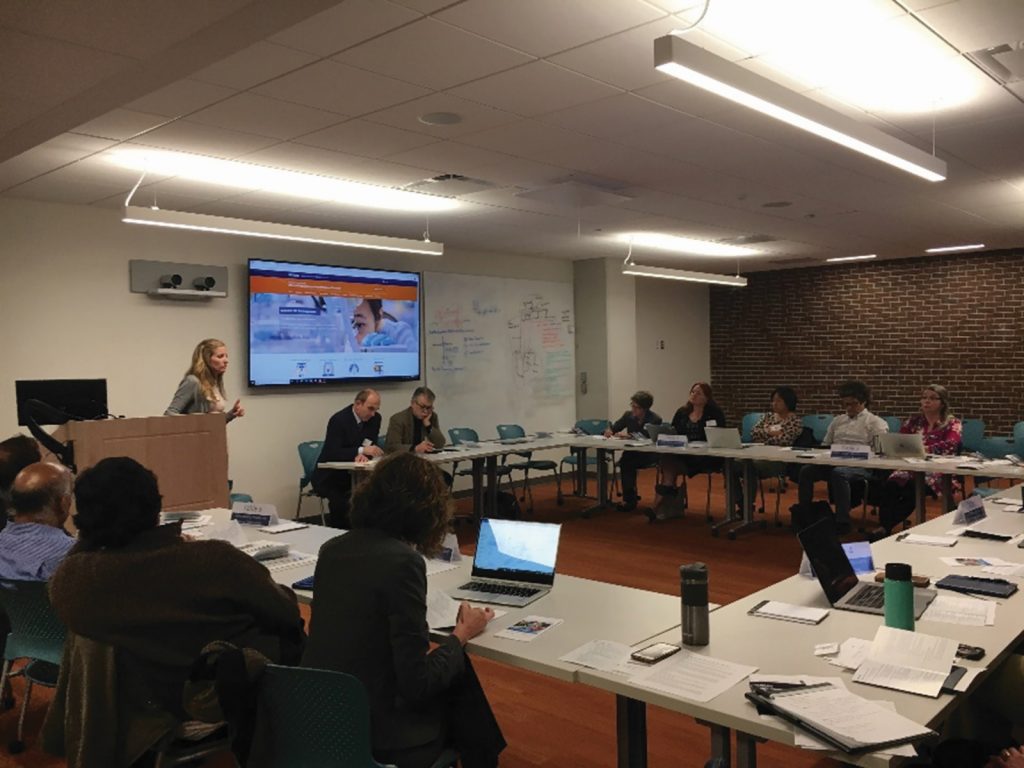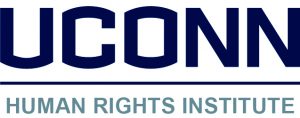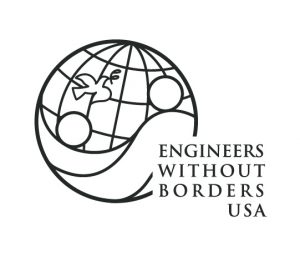How can engineering address human rights issues?
Across Peru, thousands of people do not have access to clean water or efficient transport links. Dr Davis Chacon-Hurtado, a Peruvian engineer at the University of Connecticut in the US, is using a human rights-based approach to engineering to solve these problems. He is investigating the connection between poor transport links and social inequality, and bringing sanitation to a remote community in the Andes.
TALK LIKE A HUMANITARIAN ENGINEER
INFRASTRUCTURE – the structures needed for a society to operate e.g., roads, buildings, electricity supplies and water systems
SANITATION – the process of keeping people and places clean, which requires clean water, latrines and sewage systems
PERIPHERALISATION – being forced to live on the periphery, or outskirts, of a city
LATRINE – a very simple toilet facility
BIO-DIGESTER – a tank system that biologically digests organic material, including human sewage
CHAPTER – a local group that is part of a larger organisation
Access to water and sanitation are fundamental human rights. The ability to travel to reach educational or employment opportunities is essential for ensuring social equality. Yet around the world, hundreds of thousands of people are denied these basic rights.
Dr Davis Chacon-Hurtado, an engineer at the University of Connecticut, hopes to address these issues in his home country of Peru. By combining engineering and human rights disciplines, he is researching the links between access to transport and the inequalities facing Peruvians today. His projects and collaborations, as part of the Engineering for Human Rights Initiative (EHRI), aim to reduce these inequalities by investigating the benefits of better transportation systems to influence policy changes in Peru as well as in Connecticut, USA. Davis is also working in collaboration with Engineers Without Borders to improve sanitation by providing latrines in rural communities.
HOW DOES PUBLIC TRANSPORT AFFECT INEQUALITY?
We might not always be aware of it, but efficient transport structures and services are vital for social inclusion. Most people need to travel to school or to work, or to go to the shops or the doctors. For those without private cars, or who are unable to walk, this means relying on public transport systems. Lack of transport creates a key barrier for many people to access opportunities and services, resulting in social exclusion and inequality. Davis highlights that transport-related social exclusion is usually greater in rural areas as opportunities and services are more spread out, so it is more expensive and time-consuming to travel around.
HOW IS SOCIAL DEPRIVATION LINKED TO TRANSPORTATION IN CUSCO, PERU?
Rapid urbanisation has been occurring in Latin America in recent decades. However, as cities have expanded, their infrastructure and services have not developed at the same pace. Davis grew up in Cusco, a city that lies high in the Peruvian Andes. He is leading a research project that uses a human rights-based approach to understand how transportation services in Cusco affect residents’ access to education, employment and health opportunities.
“The first step was to develop a multi-dimensional metric of transport disadvantage and equity from a spatial perspective,” explains Davis. This involved gathering data about transport services and availability of health and education opportunities for each district in Cusco. “The second step was to compare those measures with a multi-dimensional index of social deprivation.” This required data about social factors in each district, such as the population age structure, level of employment and literacy rate.
Davis has been working with Ashley Benítez Ou, a geography PhD student at the University of Connecticut, and their research has revealed significant differences in access to opportunities between different districts in Cusco. Educational, employment and health opportunities are concentrated in the centre of Cusco, whereas fewer opportunities are available on the outskirts of the city. Correspondingly, levels of social deprivation are lower in the city centre and higher in surrounding districts.
“There are marked spatial differences in access to opportunities,” says Davis. “This pattern might be related to the cost of land, where low-income groups are segregated to the outskirts of the city.” This process is known as peripheralisation. In these districts, there are fewer local opportunities, and travelling to reach opportunities in the city centre is more expensive and time-consuming.
Davis hopes his research findings in Cusco can influence transport policies in Peru and beyond. New policies should monitor and address the issues of peripheralisation and unequal development in rapidly urbanising regions in Latin America, to ensure that all urban residents have access to essential services.
WHAT INFRASTRUCTURE PROBLEMS EXIST IN RURAL PERU?
While Peruvian cities have been rapidly growing and developing since the 1990s, rural communities commonly remain isolated, underdeveloped and lacking the infrastructure found in cities. This is a particular issue in the mountainous regions of Peru, where challenging geography makes it hard to build infrastructure and where policymakers have not focused much attention.
In response to this rural deprivation and inequality, Davis collaborated with the Engineers Without Borders (EWB) chapter at the University of Connecticut and Ecosistemas Andinos, a local NGO, for the Peru Sanitation Initiative. Working with EWB and Ecosistemas Andinos, Davis and his students set out to use their engineering skills to provide clean water and sanitation to the highland community of Thastayoc.
The main aim of this student-led, community-driven project was to improve sanitation in Thastayoc by providing clean water and constructing latrines and bio-digesters for the community. The team closely collaborated with community members to ensure the engineering solutions they provided were directed by the needs of the community. Another key component of the project involved educating children in the community about water sanitation and hygiene practices, such as hand washing.
Community members said they were most concerned about the risk of contamination of their water sources, so Davis’ engineering team designed three potential water treatment systems. The community selected the option most appropriate for their needs and gave input as the final design was planned and constructed. “The final version consisted of a bathroom with shower features and a bio-digester septic tank, sludge-pit and leaching trenches to remediate waste,” says Davis.
WHAT WERE THE CHALLENGES AND JOYS OF THE PROJECT?
“Thastayoc is located 14,000 feet above sea level,” says Davis. “So, the first challenge was to adapt to the altitude, which makes performing manual labour very challenging for those who are not accustomed to it.” The mountainous terrain provided additional challenges. The lack of phone signal hampered the coordination of logistics and provision of materials from the nearest town, while the lack of road access to the community centre meant all tools and materials had to be carried to Thastayoc from the nearest road.
Language barriers were also a challenge as communication was translated from English to Spanish to Quechua, an Indigenous language spoken throughout the Andes. As good communication was vital for the project’s community-based approach, team members who spoke English and Spanish and community leaders who spoke Spanish and Quechua were essential. “Engineers are sometimes seen as problem-solvers and communities as the passive receivers of solutions,” says Davis. “We wanted to overcome this limitation by always working with the community leaders to ensure robust, two-way communication and community engagement.”
The students who participated in the Peru Sanitation Initiative had an incredible learning experience, both in terms of practical engineering application and cultural exchange. One student commented that he did not have a full sense of the role of engineering in society before the trip but was now excited by the potential of his engineering profession as he saw how it could be used to change lives. Students learnt that the community should always be at the heart of any engineering project and had the opportunity to share their engineering skills with the people of Thastayoc, working together to help reduce inequality.
Davis’ projects in Cusco and Thastayoc highlight the important role that engineers play in ensuring communities around the world have access to essential services and infrastructure.
 DR DAVIS CHACON-HURTADO
DR DAVIS CHACON-HURTADO
Department of Civil and Environmental Engineering, Human Rights Institute, University of Connecticut, USA
FIELDS OF RESEARCH: Engineering for Human Rights, Transportation Engineering
RESEARCH PROJECT: Investigating the correlation between access to transportation and sanitation infrastructure and social equality in Peru
FUNDER: University of Connecticut’s Office of the Vice President for Research
Engineers identify problems and seek to design and make solutions to those problems. “Engineering applies science and mathematics to adapt and transform matter and energy for the benefit of people,” says Davis.
Reference
https://doi.org/10.33424/FUTURUM275
INFRASTRUCTURE – the structures needed for a society to operate e.g., roads, buildings, electricity supplies and water systems
SANITATION – the process of keeping people and places clean, which requires clean water, latrines and sewage systems
PERIPHERALISATION – being forced to live on the periphery, or outskirts, of a city
LATRINE – a very simple toilet facility
BIO-DIGESTER – a tank system that biologically digests organic material, including human sewage
CHAPTER – a local group that is part of a larger organisation
Access to water and sanitation are fundamental human rights. The ability to travel to reach educational or employment opportunities is essential for ensuring social equality. Yet around the world, hundreds of thousands of people are denied these basic rights.
Dr Davis Chacon-Hurtado, an engineer at the University of Connecticut, hopes to address these issues in his home country of Peru. By combining engineering and human rights disciplines, he is researching the links between access to transport and the inequalities facing Peruvians today. His projects and collaborations, as part of the Engineering for Human Rights Initiative (EHRI), aim to reduce these inequalities by investigating the benefits of better transportation systems to influence policy changes in Peru as well as in Connecticut, USA. Davis is also working in collaboration with Engineers Without Borders to improve sanitation by providing latrines in rural communities.
HOW DOES PUBLIC TRANSPORT AFFECT INEQUALITY?
We might not always be aware of it, but efficient transport structures and services are vital for social inclusion. Most people need to travel to school or to work, or to go to the shops or the doctors. For those without private cars, or who are unable to walk, this means relying on public transport systems. Lack of transport creates a key barrier for many people to access opportunities and services, resulting in social exclusion and inequality. Davis highlights that transport-related social exclusion is usually greater in rural areas as opportunities and services are more spread out, so it is more expensive and time-consuming to travel around.
HOW IS SOCIAL DEPRIVATION LINKED TO TRANSPORTATION IN CUSCO, PERU?
Rapid urbanisation has been occurring in Latin America in recent decades. However, as cities have expanded, their infrastructure and services have not developed at the same pace. Davis grew up in Cusco, a city that lies high in the Peruvian Andes. He is leading a research project that uses a human rights-based approach to understand how transportation services in Cusco affect residents’ access to education, employment and health opportunities.
“The first step was to develop a multi-dimensional metric of transport disadvantage and equity from a spatial perspective,” explains Davis. This involved gathering data about transport services and availability of health and education opportunities for each district in Cusco. “The second step was to compare those measures with a multi-dimensional index of social deprivation.” This required data about social factors in each district, such as the population age structure, level of employment and literacy rate.
Davis has been working with Ashley Benítez Ou, a geography PhD student at the University of Connecticut, and their research has revealed significant differences in access to opportunities between different districts in Cusco. Educational, employment and health opportunities are concentrated in the centre of Cusco, whereas fewer opportunities are available on the outskirts of the city. Correspondingly, levels of social deprivation are lower in the city centre and higher in surrounding districts.
“There are marked spatial differences in access to opportunities,” says Davis. “This pattern might be related to the cost of land, where low-income groups are segregated to the outskirts of the city.” This process is known as peripheralisation. In these districts, there are fewer local opportunities, and travelling to reach opportunities in the city centre is more expensive and time-consuming.
Davis hopes his research findings in Cusco can influence transport policies in Peru and beyond. New policies should monitor and address the issues of peripheralisation and unequal development in rapidly urbanising regions in Latin America, to ensure that all urban residents have access to essential services.
WHAT INFRASTRUCTURE PROBLEMS EXIST IN RURAL PERU?
While Peruvian cities have been rapidly growing and developing since the 1990s, rural communities commonly remain isolated, underdeveloped and lacking the infrastructure found in cities. This is a particular issue in the mountainous regions of Peru, where challenging geography makes it hard to build infrastructure and where policymakers have not focused much attention.
In response to this rural deprivation and inequality, Davis collaborated with the Engineers Without Borders (EWB) chapter at the University of Connecticut and Ecosistemas Andinos, a local NGO, for the Peru Sanitation Initiative. Working with EWB and Ecosistemas Andinos, Davis and his students set out to use their engineering skills to provide clean water and sanitation to the highland community of Thastayoc.
The main aim of this student-led, community-driven project was to improve sanitation in Thastayoc by providing clean water and constructing latrines and bio-digesters for the community. The team closely collaborated with community members to ensure the engineering solutions they provided were directed by the needs of the community. Another key component of the project involved educating children in the community about water sanitation and hygiene practices, such as hand washing.
Community members said they were most concerned about the risk of contamination of their water sources, so Davis’ engineering team designed three potential water treatment systems. The community selected the option most appropriate for their needs and gave input as the final design was planned and constructed. “The final version consisted of a bathroom with shower features and a biodigester septic tank, sludge-pit and leaching trenches to remediate waste,” says Davis.
WHAT WERE THE CHALLENGES AND JOYS OF THE PROJECT?
“Thastayoc is located 14,000 feet above sea level,” says Davis. “So, the first challenge was to adapt to the altitude, which makes performing manual labour very challenging for those who are not accustomed to it.” The mountainous terrain provided additional challenges. The lack of phone signal hampered the coordination of logistics and provision of materials from the nearest town, while the lack of road access to the community centre meant all tools and materials had to be carried to Thastayoc from the nearest road.
Language barriers were also a challenge as communication was translated from English to Spanish to Quechua, an Indigenous language spoken throughout the Andes. As good communication was vital for the project’s community-based approach, team members who spoke English and Spanish and community leaders who spoke Spanish and Quechua were essential. “Engineers are sometimes seen as problem-solvers and communities as the passive receivers of solutions,” says Davis. “We wanted to overcome this limitation by always working with the community leaders to ensure robust, two-way communication and community engagement.”
The students who participated in the Peru Sanitation Initiative had an incredible learning experience, both in terms of practical engineering application and cultural exchange. One student commented that he did not have a full sense of the role of engineering in society before the trip but was now excited by the potential of his engineering profession as he saw how it could be used to change lives. Students learnt that the community should always be at the heart of any engineering project and had the opportunity to share their engineering skills with the people of Thastayoc, working together to help reduce inequality.
Davis’ projects in Cusco and Thastayoc highlight the important role that engineers play in ensuring communities around the world have access to essential services and infrastructure.
 DR CHRISTIAN NANSEN
DR CHRISTIAN NANSEN
Professor of Entomology and Nematology, College of Agriculture and Environment, University of California, Davis, USA
FIELD OF RESEARCH: Insect Ecology and Management
RESEARCH PROJECT: Developing an interactive teaching tool that describes resistance evolution and basic economics of insecticide-based pest management
Engineers identify problems and seek to design and make solutions to those problems. “Engineering applies science and mathematics to adapt and transform matter and energy for the benefit of people,” says Davis.
There are many fields of engineering, including civil, mechanical, electrical and chemical, all of which benefit from a human rights-based approach to ensure the solutions and systems developed by engineers are used to improve the world. Civil engineering, Davis’ field, involves designing, building and testing all kinds of infrastructure, from buildings to bridges, transport links to water systems.
HOW CAN ENGINEERING PROMOTE SOCIAL JUSTICE?
Davis uses his skills and knowledge as an engineer to address human rights issues, particularly focusing on access to resources such as sanitation and transport for the most vulnerable in society. He says this collaboration between engineering and human rights is the most exciting part of his job.
Davis and his team focus on using a human rights-based approach to engineering. This means the work they do must always promote public welfare. “This approach enhances the ability of engineers to enact socially and environmentally responsive technological solutions that advance human dignity,” he explains.
WHAT IS THE ENGINEERING FOR HUMAN RIGHTS INITIATIVE (EHRI)?
This exciting initiative is a collaboration between the School of Engineering and the Human Rights Institute at the University of Connecticut. By combining disciplines, the initiative hopes to address the biggest challenges facing the world today. “Interdisciplinary collaborations are essential to the work of the EHRI,” says Davis. The variety of skills and expertise within the EHRI allows the team to apply engineering solutions to address a broad range of human rights challenges, from food and water security to education, sustainability, and cybersecurity. Davis works alongside his colleagues, Dr Shareen Hertel and Dr Michael Rubin, in the EHRI.
If you were an engineer, how would you use your skills and knowledge to promote human rights?
EXPLORE A CAREER IN ENGINEERING FOR HUMAN RIGHTS
• Learn about the Engineering for Human Rights Initiative at the University of Connecticut, including the projects conducted by the EHRI and educational pathways offered at the university: www.engineeringforhumanrights.initiative.uconn.edu
• If you want to use your engineering skills to improve the lives of others, Davis recommends volunteering with Engineers Without Borders when you begin your studies, which will provide you with impactful, hands-on experience: www.ewb-usa.org
• Engineering for Change has helpful career resources for people looking to start their career in engineering for human rights: www.engineeringforchange.org/what-we-do/professional-development
• Engineering combines maths and science to solve real-world problems, so studying maths, physics, chemistry and computing at school will all be useful when applying for an engineering degree at university.
• Different fields of engineering (e.g., civil, mechanical, electrical) will have different university degree programmes, all of which will have different entry requirements. Research the fields of engineering that interest you to find out what subjects you should study at school.
• A human rights perspective can be applied to every field of engineering. Study social science subjects at school to learn about the human side of engineering challenges.
• Davis recommends that engineering students take university classes focused on human rights and sustainability.
• The School of Engineering at the University of Connecticut has recently launched a Multidisciplinary Engineering Degree, which explores the collaborative approach between research disciplines and includes courses in engineering for human rights.
HOW DID DAVIS BECOME AN ENGINEER?
WHAT WERE YOUR INTERESTS WHEN YOU WERE YOUNGER?
I have always been interested in how things work, and once I came to understand them, I enjoyed sharing what I learned with my family and friends. I tend to look at things from a historical perspective as I’ve always been fascinated by history. I often spend hours at my local library going through history books.
HOW DID GROWING UP IN CUSCO INFLUENCE YOUR DECISION TO USE ENGINEERING TO ADDRESS INEQUALITY IN PERU?
I think it came from two primary sources. My trips to rural areas in the highlands of Cusco helped me understand the link between social exclusion and poverty. I was also interested in policymaking for economic development, where economic inequality is a critical topic. I used to ask myself: what can I do to help as an engineer?
WHEN AND WHY DID YOU BECOME INTERESTED IN THE HUMAN RIGHTS APPLICATIONS OF ENGINEERING?
During my master’s studies at the University of Puerto Rico and PhD at Purdue University in the US, I became interested in the social dimensions of engineering. My work in Puerto Rico was based on community engagement. I became fascinated by research at the intersection of social sciences and transportation engineering.
HOW DID YOU COME TO ENGAGE WITH THE ENGINEERING FOR HUMAN RIGHTS INITIATIVE?
As my colleagues have said, it seemed this position at the Human Rights Institute was created specifically for me and my interests! I applied for the position with great excitement and curiosity to learn more about the work of the initiative at the intersection of human rights and other disciplines.
Working alongside colleagues specialising in a broad range of topics helped me feel comfortable working in interdisciplinary areas. My experiences of studying and working in different schools, from the highlands of Peru, to the Caribbean, to the US Midwest, and of working with a diverse group of colleagues, also helped me see things from different perspectives.
WHAT ARE YOUR PROUDEST CAREER ACHIEVEMENTS SO FAR, AND WHAT ARE YOUR AMBITIONS FOR FUTURE?
My proudest achievement is to be able to inspire my students to believe that engineering can make our world more equitable and sustainable. Some of my students are starting new jobs where I am sure the material learned through classes or research will help guide their work.
In the future, I hope my colleagues and I can spread the ideas of the Engineering for Human Rights Initiative to other schools and create a network of scholars and students working on the most pressing human rights issues in the USA and around the world.
WHAT DO YOU ENJOY OUTSIDE OF WORK?
I used to visit my grandparents in a rural area of Cusco, and that’s where I got my enjoyment for hiking. I also enjoy cooking Peruvian cuisine and visiting museums and historical landmarks.
DAVIS’ TOP TIPS
01 Search for topics that inspire you and get involved in those
02 Read the scientific literature around those topics, attend conferences, and do not be discouraged if it all looks overwhelming
03 Develop the ability to listen to other people and value their opinions
04 Search for mentors who can guide you in your interests, and be a mentor to others whenever you can
Do you have a question for Davis?
Write it in the comments box below and Davis will get back to you. (Remember, researchers are very busy people, so you may have to wait a few days.)


